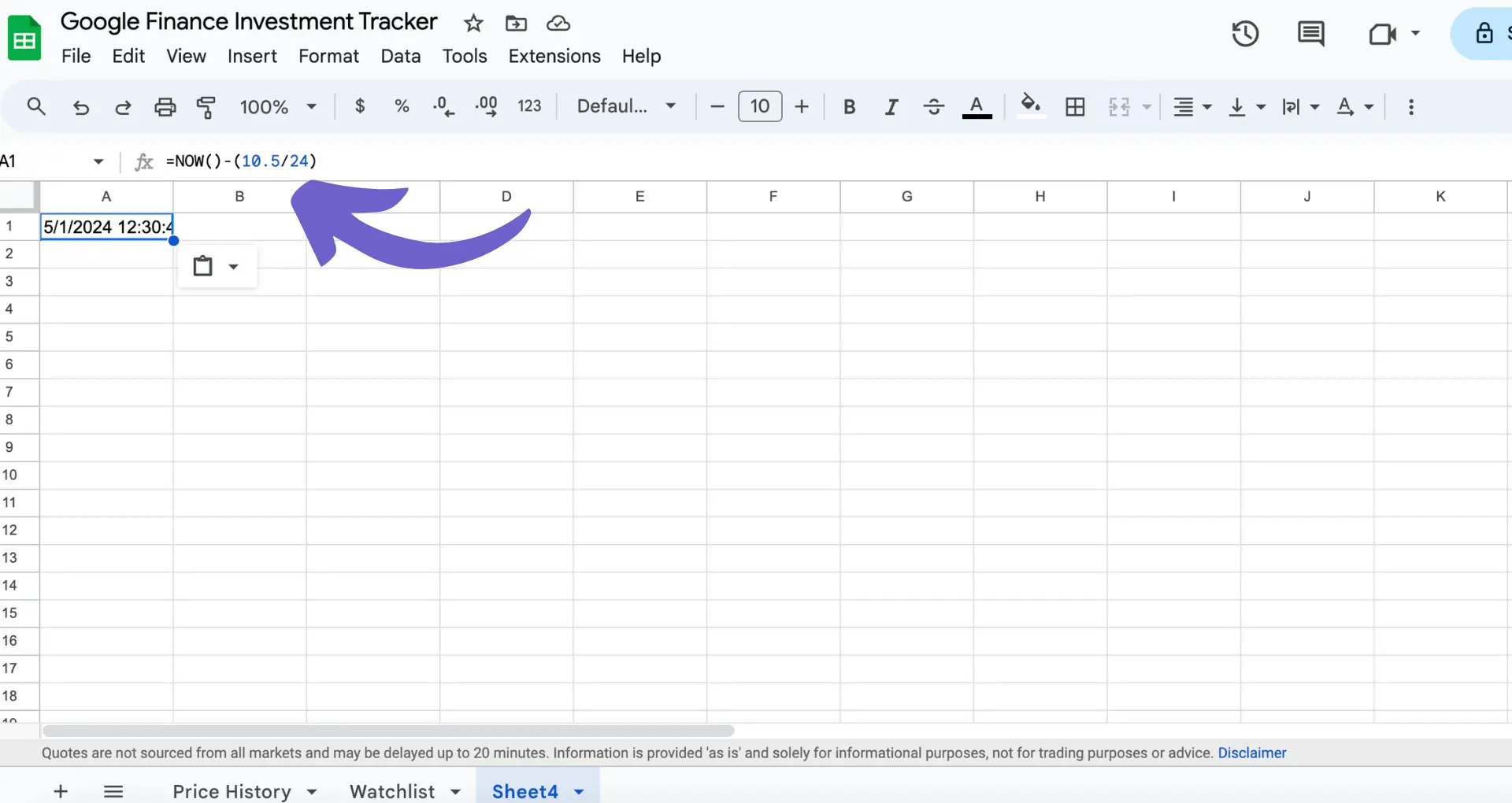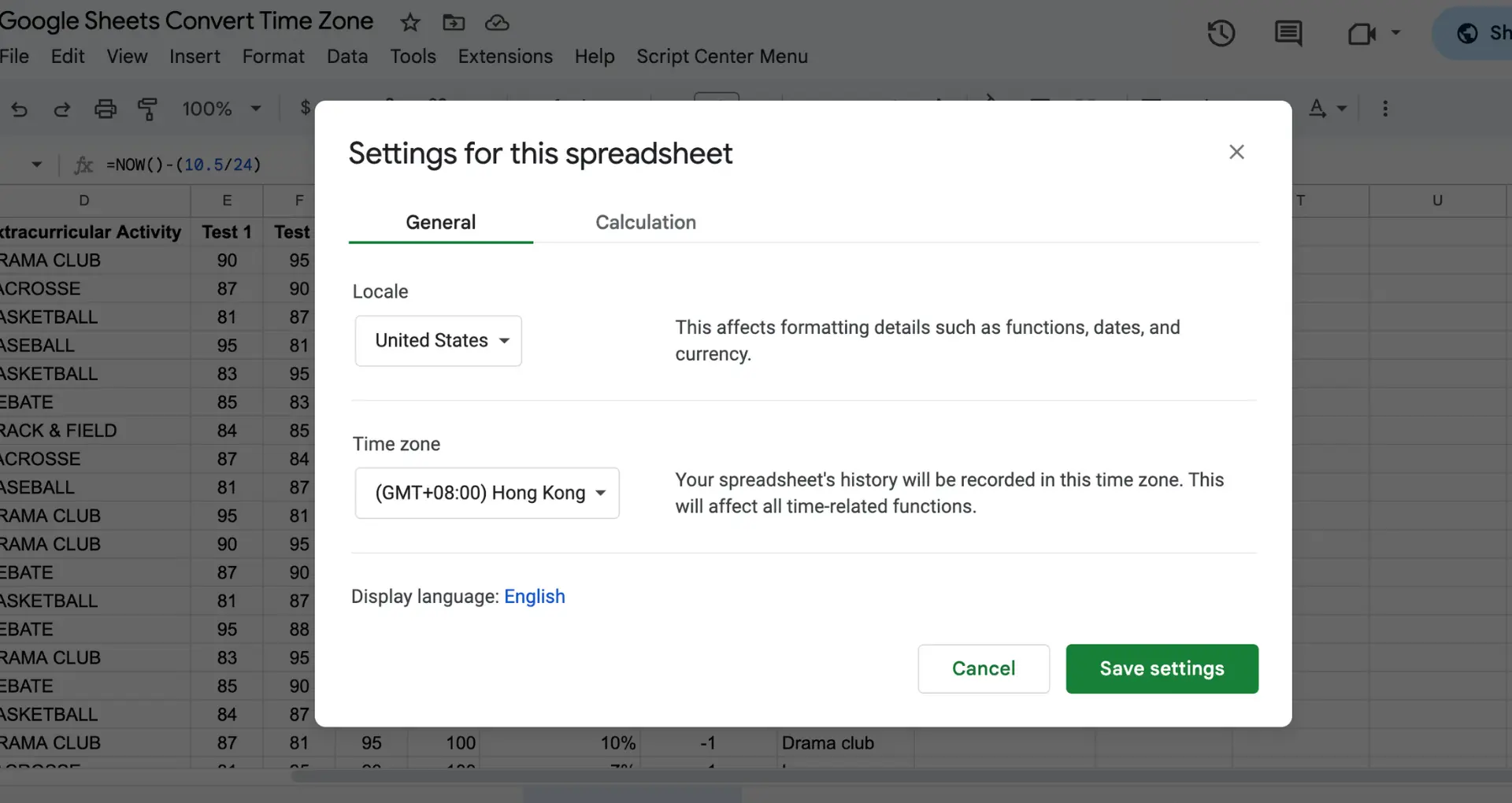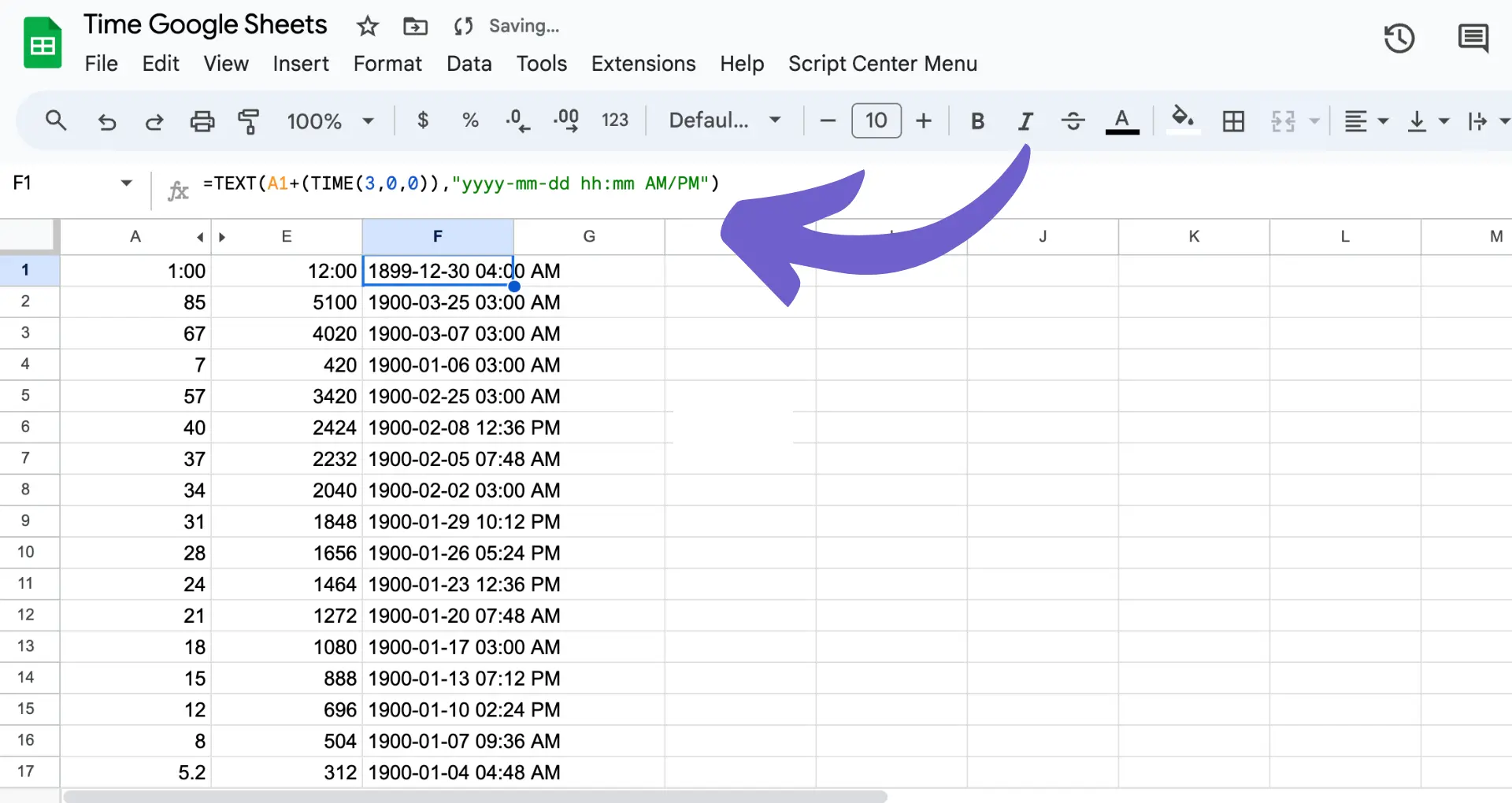Set your time zone in Google Sheets settings, then use formulas to convert.
By the way, we're Bardeen, we build a free AI Agent for doing repetitive tasks.
Since you're working with time zones, you might love Bardeen's GPT in Spreadsheets. It helps with complex formulas and automates your workflow.
Managing data across different time zones can be a challenge, especially when collaborating with global teams. Google Sheets provides built-in functionality to handle time zone conversions, making it easier to ensure accurate and consistent data. In this step-by-step guide, we'll walk you through the process of converting time zones in Google Sheets using formulas, from understanding how time data is stored to creating basic and advanced conversion formulas.
Understanding Time Zone Data in Google Sheets
Managing data across different time zones is crucial for global teams collaborating in Google Sheets. To ensure accurate data handling, it's essential to understand how Google Sheets stores and handles date and time information.
Google Sheets uses a "serial number" format to store dates and times, which has its roots in the early days of spreadsheet software like Lotus 1-2-3. In this system, dates are represented as whole numbers, with January 1, 1900, as the starting point (serial number 1). Time values are stored as decimal fractions of a day, with 0.5 representing noon.
When working with time zone data in Google Sheets, keep the following points in mind:
- Ensure that your spreadsheet's time zone settings match your local time zone to maintain consistency across the sheet.
- Be aware of how Google Sheets interprets and displays date and time data based on the serial number format.
- Use built-in functions like NOW(), TODAY(), and TIME() to work with current date and time values in your desired time zone.

By understanding the underlying data storage format and setting up your spreadsheet correctly, you'll be better equipped to handle time zone conversions and calculations accurately. For more advanced features, consider using GPT for Google Sheets to streamline your workflows.
Setting Up Your Spreadsheet for Time Zone Conversion
Before diving into time zone conversion formulas, it's important to ensure your Google Sheets settings are configured correctly. This will help maintain consistency in data handling and avoid confusion when collaborating with others.
To set the time zone in Google Sheets:
- Open your spreadsheet and click on "File" in the menu bar.
- Select "Settings" from the dropdown menu.
- In the "General" tab, locate the "Time zone" option and choose the appropriate time zone for your location or project requirements.
- Click "Save settings" to apply the changes.

When inputting the original date and time data, use a clear and consistent format that Google Sheets can easily recognize. Some recommended formats include:
- MM/DD/YYYY HH:MM:SS AM/PM
- YYYY-MM-DD HH:MM:SS
- DD/MM/YYYY HH:MM:SS
Ensure that the date and time values are entered in separate columns for easier manipulation and conversion using formulas. For more advanced workflows, you can scrape data from websites and add it to your sheets.
Automate updating LinkedIn profiles in your Google Sheets. Enrich LinkedIn profiles and save time.
By setting up your spreadsheet with the correct time zone and using recognizable date and time formats, you'll lay a strong foundation for accurate time zone conversions in Google Sheets.
Creating the Basic Time Zone Conversion Formula
To convert time zones in Google Sheets, you can use a combination of the TEXT and TIME functions. Here's a step-by-step guide to constructing the basic formula:
- In a cell, enter the original date and time you want to convert (e.g., A1).
- In another cell (e.g., B1), enter the following formula:
=TEXT(A1+(TIME(N,0,0)),"yyyy-mm-dd hh:mm AM/PM")
Replace "N" with the number of hours to add or subtract based on the time zone difference. Use a positive number for time zones ahead and a negative number for time zones behind. - Customize the "yyyy-mm-dd hh:mm AM/PM" part to your desired date and time format.
- Press Enter to see the converted time.
Here are some examples of adjusting the formula for specific time zone conversions:
- EST to PST: =TEXT(A1+(TIME(-3,0,0)),"yyyy-mm-dd hh:mm AM/PM")
- CET to EST: =TEXT(A1+(TIME(-6,0,0)),"yyyy-mm-dd hh:mm AM/PM")
- IST to JST: =TEXT(A1+(TIME(3,30,0)),"yyyy-mm-dd hh:mm AM/PM")

Keep in mind that this basic formula doesn't automatically account for daylight saving time (DST) changes. To handle DST, you may need to use more advanced techniques or custom functions for data, which we'll cover in a later section.
Automating Time Zone Conversions for Multiple Entries
Once you have set up the basic time zone conversion formula in Google Sheets, you can easily apply it to multiple rows of data using the fill handle feature. Here's how:
- Select the cell containing your time zone conversion formula.
- Hover your mouse over the small square at the bottom-right corner of the cell until the cursor changes to a crosshair.
- Click and drag the crosshair down the column to apply the formula to the desired range of cells.
- Release the mouse button, and Google Sheets will automatically populate the selected cells with the converted time zone values.
When automating time zone conversions for multiple entries, it's essential to ensure that your original date and time data is formatted consistently. Inconsistencies in the source data can lead to errors or unexpected results in the converted values.
To avoid potential pitfalls:
- Verify that all original date and time entries are in a format recognized by Google Sheets (e.g., "yyyy-mm-dd hh:mm AM/PM").
- Double-check that the time zone conversion formula is correctly referencing the appropriate cells for each row.
- Test the automated conversions on a small sample of data before applying it to your entire dataset.
By taking these precautions and leveraging the fill handle feature, you can efficiently convert time zones for large volumes of data in Google Sheets, saving valuable time and reducing the risk of manual errors. For more advanced automation, consider using AI to automate repetitive tasks in your spreadsheets.
Advanced Techniques and Troubleshooting
When working with time zone conversions in Google Sheets, you may encounter some common issues, such as:
- Daylight saving time changes not being accounted for automatically
- Unexpected results when converting between certain time zones
- Difficulty handling more complex scenarios, like dynamic time zone conversions
To address daylight saving time changes, you can modify your conversion formula to include a conditional statement that checks for the specific dates when DST starts and ends in the relevant time zones. For example:
=IF(AND(A1>=DATE(YEAR(A1),3,14),A1In this formula, the IF statement checks if the date in cell A1 falls between March 14 and November 7 (the typical DST period in many regions), and adjusts the time conversion accordingly by adding or subtracting an extra hour.
For more complex time zone conversions that require dynamic adjustments or factoring in additional variables, you can leverage the power of Google Apps Script integration. By creating custom functions in the script editor, you can write JavaScript code to handle advanced time zone conversion scenarios and call these functions from your Google Sheets formulas.
Here's a basic example of a custom function that converts a given time from one time zone to another, accounting for daylight saving time:
function convertTZ(datetime,fromTZ,toTZ){var moment=Moment.moment(datetime);var convertedTime=moment.tz(fromTZ).tz(toTZ);return convertedTime.format("YYYY-MM-DD HH:mm:ss")}
To use this function in your Google Sheet, simply enter a formula like =convertTZ(A1,"America/New_York","Europe/London") to convert the time in cell A1 from Eastern Time to British Summer Time, automatically adjusting for any applicable daylight saving time differences.
By combining the power of built-in Google Sheets functions and custom Google Apps Scripts, you can tackle even the most challenging time zone conversion requirements and ensure accurate results for your global team's needs.
Automate Time Zone Tasks in Google Sheets with Bardeen
Converting time zones in Google Sheets can be done manually with formulas, but for users looking to streamline their workflow and ensure accuracy, automation is key. Bardeen offers powerful integrations with Google Sheets to automate various tasks, including time zone conversions.
Here are some examples of automations that can be built using Bardeen's playbooks:
- Copy a list of meetings during a timeframe to a Google Sheet: This playbook automates the process of transferring your Google Calendar meetings into a Google Sheets spreadsheet, allowing for easy time zone adjustments and meeting management.
- Copy a newly created Asana task to Google Sheets: For users managing tasks across different time zones, this playbook ensures that Asana tasks are automatically updated in Google Sheets, keeping your schedules in sync.
- Get a daily summary of your emails and save to Google Sheets: This playbook can be particularly useful for managing communications across time zones by summarizing your emails in Google Sheets daily.
These automations save valuable time and help maintain accuracy when working with data across different time zones. Start automating by downloading the Bardeen app.







.svg)
.svg)
.svg)
